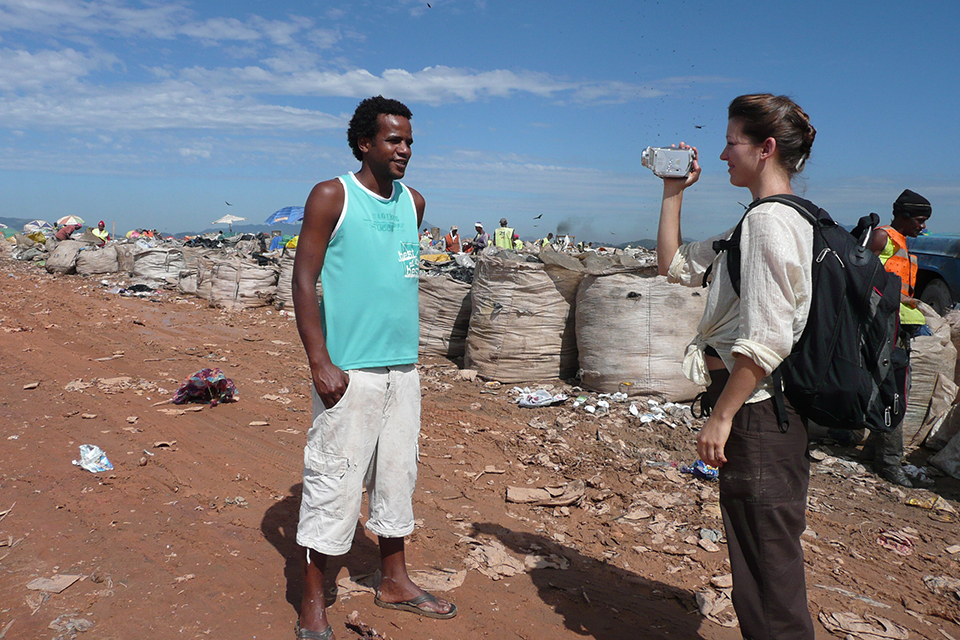New report summarizes how UVic contributes to community
- Chelsea Falconer

Community-based researcher Crystal Tremblay is intrigued by the threads that draw UVic and community together. She’s spent over 10 years collaborating with communities to address local challenges, such as an initiative that improved the safety and income generation of organized waste pickers in São Paulo, Brazil.
Tremblay’s latest project moves beyond her personal research—as the research associate with UVic’s Office of Community-University Engagement (OCUE), she recently wrapped up a report that synthesizes the breadth and impact of UVic-led community-based initiatives.
“At UVic, so much incredible work is being done with and for local and global communities,” says Tremblay. “This project is the first of its kind to capture the cumulative change that these diverse projects are making.”
The report, Community-Engaged Research at the University of Victoria, was co-sponsored by UVic’s vice-president research and OCUE. It covers the period 2009 to 2015 and includes a campus-wide scan of data provided in the Enhanced Planning Tool (EPT) for 2014/15.
Tremblay identified 167 unique instances of community-engaged research (CER) and a total of $21 million in funding secured for CER initiatives between 2009 and 2015. More than 20 per cent of these initiatives involved Indigenous communities and 70 per cent involved communities on Vancouver Island. The most common areas of focus for these initiatives included healthy lives and well-being, inclusive and equitable education, and the conservation and sustainable use of oceans and marine resources.
The report also considers how UVic’s projects intersect with the United Nations’ 17 Sustainable Development Goals, the five guiding principles of OCUE and the four areas of international impact identified in UVic’s International Plan.
“I’ve seen first-hand how the participatory process of communityengaged research is transformative for everyone involved,” says Tremblay. “This type of research responds to pressing and complex challenges in society and has a lasting impact, and it’s encouraging to see that UVic is playing such a vital role.”
In addition to the formal report, Tremblay conducted 12 case studies to showcase concrete examples of UVic’s CER, including her own work supporting Jutta Gutberlet (geography) on the Participatory Sustainable Waste Management (PSWM) project in São Paulo. The five-year community-university research partnership helped to create a more inclusive and participatory culture in waste management policy for one of the largest landfills in South America, with community members leading the way. They, along with Tremblay and Gutberlet, produced a documentary as part of the project.
More than a decade ago as a UVic master’s student in geography, Tremblay also helped to shed light on the demographics and day-to-day lives of binners in Vancouver, in a socioeconomic study which mapped out the routes of 10 binners whom she interviewed extensively in 2005 while doing field work in the Downtown Eastside.
Tremblay has a doctorate from the Department of Geography at UVic and recently completed a SSHRC postdoctoral fellowship with the Institute for Resources, Environment and Sustainability at UBC. She currently teaches as a sessional instructor in UVic’s geography department.
“Working alongside community members leads to change that changes lives,” adds Tremblay. “The new impact report provides a peek at some of the ways UVic strives towards this every day.”
Read the full report on CER at UVic, and explore the 12 case studies included in the project.

